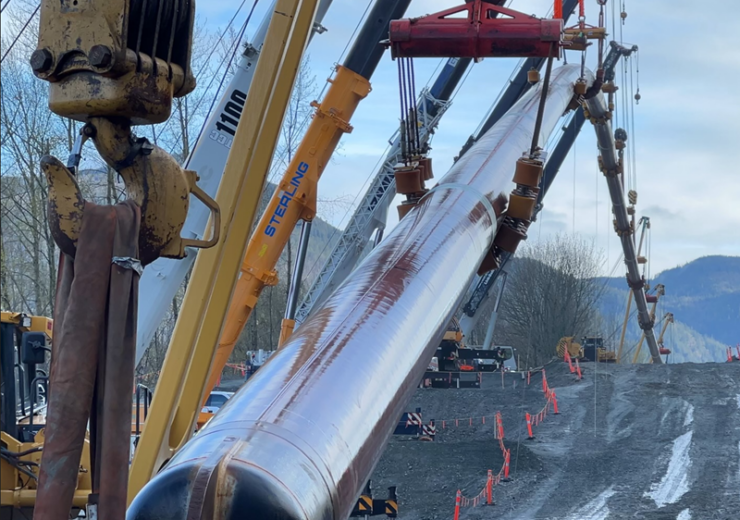The authorisation allows the pipeline to transport crude oil from Trans Mountain’s Edmonton Terminal in Strathcona County, Alberta, to its Westridge Marine Terminal in Burnaby, British Columbia, within Western Canada

Trans Mountain expansion project set to begin operations after securing final regulatory approval. (Credit: Trans Mountain Corporation)
Trans Mountain has secured the final authorisation from the Canada Energy Regulator (CER) to begin operations of the C$34bn ($24.7bn) Trans Mountain expansion project.
The authorisation comes via the regulator’s approval of Trans Mountain’s final pipeline leave to open (LTO) application.
Canada Energy Regulator said that the authorisation allows the pipeline to transport crude oil from Trans Mountain’s Edmonton Terminal in Strathcona County, Alberta, to its Westridge Marine Terminal in Burnaby, British Columbia, within Western Canada.
Companies under CER regulation are required to seek and secure LTO permits before pipelines, pipeline segments, or related facilities like pump stations or tanks can commence operations. Through the application process, the CER commission assesses the safety of the pipeline and associated facilities.
Canada Energy Regulator collaborated with the Trans Mountain Indigenous advisory and monitoring committee (IAMC-TMX) during the construction phase of the Trans Mountain expansion project. This was to ensure substantive Indigenous involvement in overseeing construction operations.
According to the regulator, the IAMC-TMX played a pivotal role in enhancing safety and environmental monitoring for the project, aiming to prevent adverse impacts, safeguard Indigenous rights and interests, and foster constructive relationships.
Canada Energy Regulator CEO Tracy Sletto said: “Today marks a significant milestone, and we recognise that our regulatory oversight role continues as we ensure the pipeline is operated safely and the company delivers on its commitments.
“We hold the companies we regulate to the highest standards, and our commitment to that remains steadfast. We also look forward to continuing our collaboration with the IAMC-TMX, and recognise that meaningful First Nations, Métis and Inuit involvement in regulatory oversight is key to building and operating energy projects now and into the future.”
The original 1,150km long Trans Mountain oil products pipeline was built in 1953 between Alberta and British Columbia.
The Trans Mountain expansion project entails duplicating the current pipeline route from Strathcona County, near Edmonton in Alberta, to Burnaby in British Columbia. The expansion project has established a pipeline network of more than 980km, boosting the capacity of the existing Trans Mountain system from around 300,000 barrels per day to 890,000 barrels per day.
